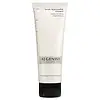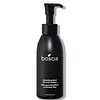What's inside
What's inside
 Key Ingredients
Key Ingredients

 Benefits
Benefits

 Concerns
Concerns

 Ingredients Side-by-side
Ingredients Side-by-side

Water
Skin ConditioningSodium Cocoyl Isethionate
CleansingGlyceryl Stearate Se
EmulsifyingStearic Acid
CleansingCocamidopropyl Betaine
CleansingCetyl Alcohol
EmollientDimethicone PEG-8 Meadowfoamate
EmollientHamamelis Virginiana Water
AstringentAlgae Exopolysaccharides
HumectantTocopheryl Acetate
AntioxidantSodium Lauroyl Oat Amino Acids
CleansingCamellia Sinensis Leaf Extract
AntimicrobialPyrus Malus Fruit Extract
Skin ConditioningCitrus Medica Limonum Peel
Skin ConditioningCitrus Aurantium Dulcis Peel Cera
EmollientSaccharum Officinarum Extract
MoisturisingArctostaphylos Uva Ursi Leaf Extract
Skin ConditioningGlycyrrhiza Glabra Root Extract
BleachingJojoba Alcohol
EmollientPotassium Jojobate
Skin ConditioningGlycerin
HumectantLauryl Lactyl Lactate
Skin ConditioningButylene Glycol
HumectantBenzoic Acid
MaskingPhenoxyethanol
PreservativeCaprylyl Glycol
EmollientHexylene Glycol
EmulsifyingSodium Chloride
MaskingXanthan Gum
EmulsifyingEthylhexylglycerin
Skin ConditioningWater, Sodium Cocoyl Isethionate, Glyceryl Stearate Se, Stearic Acid, Cocamidopropyl Betaine, Cetyl Alcohol, Dimethicone PEG-8 Meadowfoamate, Hamamelis Virginiana Water, Algae Exopolysaccharides, Tocopheryl Acetate, Sodium Lauroyl Oat Amino Acids, Camellia Sinensis Leaf Extract, Pyrus Malus Fruit Extract, Citrus Medica Limonum Peel, Citrus Aurantium Dulcis Peel Cera, Saccharum Officinarum Extract, Arctostaphylos Uva Ursi Leaf Extract, Glycyrrhiza Glabra Root Extract, Jojoba Alcohol, Potassium Jojobate, Glycerin, Lauryl Lactyl Lactate, Butylene Glycol, Benzoic Acid, Phenoxyethanol, Caprylyl Glycol, Hexylene Glycol, Sodium Chloride, Xanthan Gum, Ethylhexylglycerin
Glycereth-26
HumectantGlycerin
HumectantSodium Cocoyl Glutamate
CleansingSodium Lauroyl Glutamate
PEG-120 Methyl Glucose Dioleate
EmulsifyingCharcoal Powder
AbrasiveCynara Scolymus Leaf Extract
Skin ConditioningAscorbyl Glucoside
AntioxidantGlycyrrhiza Glabra Root Extract
BleachingGlycolic Acid
BufferingSimmondsia Chinensis Seed Extract
AbrasivePelargonium Graveolens Flower Oil
MaskingEpilobium Angustifolium Flower/Leaf/Stem Extract
Skin ConditioningCitrus Paradisi Seed Extract
MaskingWater
Skin ConditioningGlucosyl Hesperidin
HumectantCeteth-25
CleansingOleth-10
EmulsifyingXanthan Gum
EmulsifyingButylene Glycol
HumectantPolysorbate 20
EmulsifyingGlycereth-26, Glycerin, Sodium Cocoyl Glutamate, Sodium Lauroyl Glutamate, PEG-120 Methyl Glucose Dioleate, Charcoal Powder, Cynara Scolymus Leaf Extract, Ascorbyl Glucoside, Glycyrrhiza Glabra Root Extract, Glycolic Acid, Simmondsia Chinensis Seed Extract, Pelargonium Graveolens Flower Oil, Epilobium Angustifolium Flower/Leaf/Stem Extract, Citrus Paradisi Seed Extract, Water, Glucosyl Hesperidin, Ceteth-25, Oleth-10, Xanthan Gum, Butylene Glycol, Polysorbate 20
Alternatives
Ingredients Explained
These ingredients are found in both products.
Ingredients higher up in an ingredient list are typically present in a larger amount.
Butylene Glycol (or BG) is used within cosmetic products for a few different reasons:
Overall, Butylene Glycol is a safe and well-rounded ingredient that works well with other ingredients.
Though this ingredient works well with most skin types, some people with sensitive skin may experience a reaction such as allergic rashes, closed comedones, or itchiness.
Learn more about Butylene GlycolGlycerin is already naturally found in your skin. It helps moisturize and protect your skin.
A study from 2016 found glycerin to be more effective as a humectant than AHAs and hyaluronic acid.
As a humectant, it helps the skin stay hydrated by pulling moisture to your skin. The low molecular weight of glycerin allows it to pull moisture into the deeper layers of your skin.
Hydrated skin improves your skin barrier; Your skin barrier helps protect against irritants and bacteria.
Glycerin has also been found to have antimicrobial and antiviral properties. Due to these properties, glycerin is often used in wound and burn treatments.
In cosmetics, glycerin is usually derived from plants such as soybean or palm. However, it can also be sourced from animals, such as tallow or animal fat.
This ingredient is organic, colorless, odorless, and non-toxic.
Glycerin is the name for this ingredient in American English. British English uses Glycerol/Glycerine.
Learn more about GlycerinGlycyrrhiza Glabra Root Extract is an extract of the roots of Licorice. It has been found to have several benefits such as skin hydrating, conditioning, and soothing.
One component, glabridin, has extra potent antioxidant and soothing properties. It has also been found to block pigmentation from UVB rays in guinea pigs.
Licorice Root also contains a flavonoid. Flavonoids are a natural substance from in plants. Flavonoids also have antioxidant properties.
Another component, glycyrrhizin, has been found to have anti-inflammatory and antimicrobial benefits. This may make licorice root extract effective at treating acne. However, more research is needed to support this.
Liquiritin is one of the flavone compounds found in licorice. It has been found to help lighten skin by preventing tyrosinase from reacting with tyrosine. When the two react, protein is converted to melanin. Melanin is the substance in your body that gives your features pigmentation.
Learn more about Glycyrrhiza Glabra Root ExtractWater. It's the most common cosmetic ingredient of all. You'll usually see it at the top of ingredient lists, meaning that it makes up the largest part of the product.
So why is it so popular? Water most often acts as a solvent - this means that it helps dissolve other ingredients into the formulation.
You'll also recognize water as that liquid we all need to stay alive. If you see this, drink a glass of water. Stay hydrated!
Learn more about WaterXanthan gum is used as a stabilizer and thickener within cosmetic products. It helps give products a sticky, thick feeling - preventing them from being too runny.
On the technical side of things, xanthan gum is a polysaccharide - a combination consisting of multiple sugar molecules bonded together.
Xanthan gum is a pretty common and great ingredient. It is a natural, non-toxic, non-irritating ingredient that is also commonly used in food products.
Learn more about Xanthan Gum